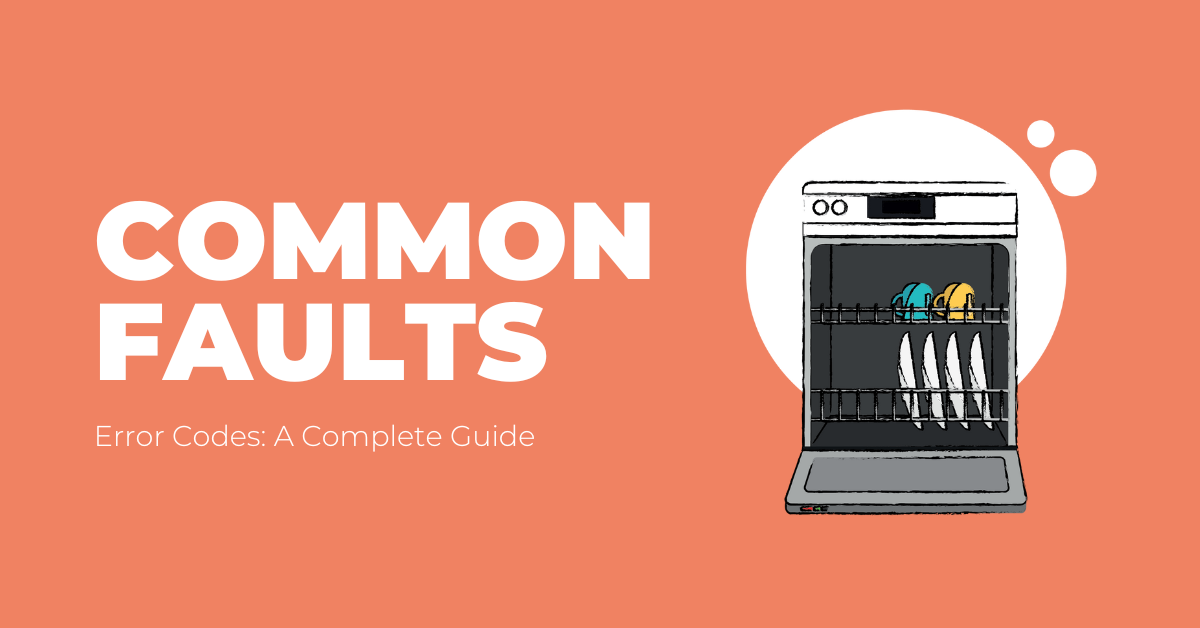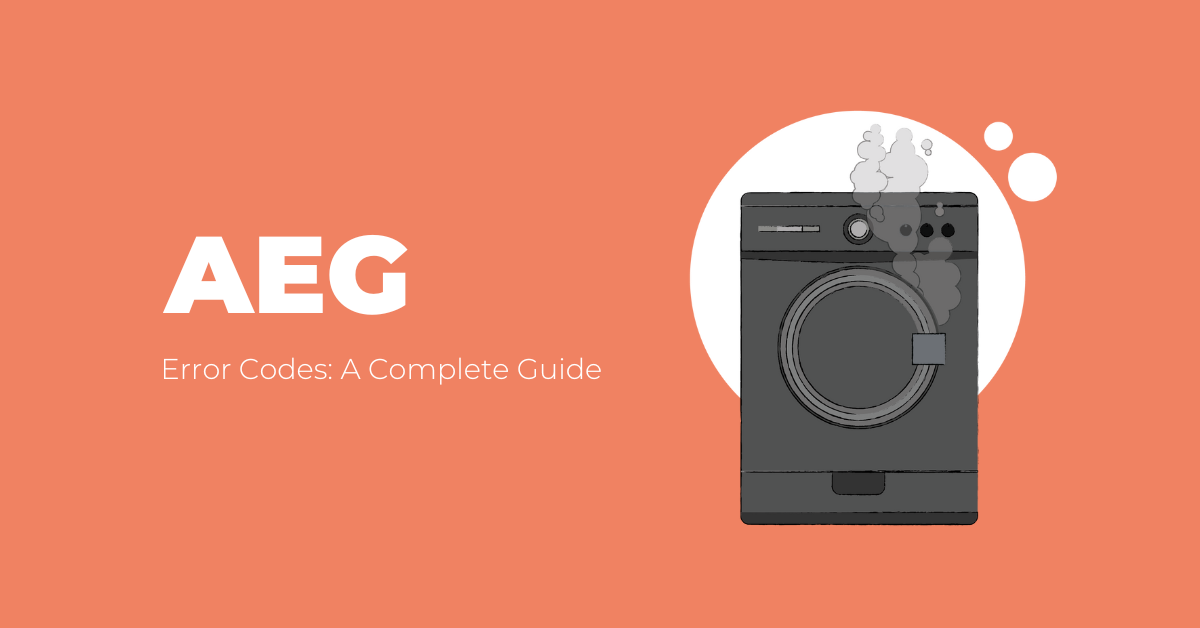
Dishwashers have been an invaluable home appliance for a number of years, saving time and hassle especially with large families or hobby chefs. More often than not, dishwashers will last a good 10 years without breaking down, but some can develop faults earlier. When your dishwasher goes wrong, it can be a stressful experience, especially if it doesn’t have a digital display to give a fault code, so we’ve curated some of our top tips for diagnosing and troubleshooting common dishwasher faults in this article:
Leaks
Clogged Filter
The single largest cause of dishwasher leaks is a clogged dishwasher filter. This usually exists at the centre of the bottom of the dishwasher and can be pulled out quite easily. It’s designed to catch small pieces of food or grit and stop them from exiting through the waste pipe. Once you have removed the dishwasher filter, remove any blockages from it and rinse it under the kitchen tap. We would recommend that your dishwasher filter is cleaned once a month to help prevent any build-up.
Failed Door Seal
If the water is leaking from the front of the dishwasher onto your kitchen floor, this could be due to a broken door seal. Open the door of the dishwasher and run your fingertip along the seal to check if it has been worn, chipped, pulled away or warped. When the vinyl or rubber of a dishwasher door deal deteriorates, they cannot form an effective seal around the door to keep water on the inside of the machine. If the seal has deteriorated, you may need to order a new part from the manufacturer.
Not Draining
When your dishwasher finishes a cleaning cycle, the only remaining moisture within the machine should be condensation from the steam. If you’re left staring at a pool of water underneath your bottom drawer rack, there’s a good chance something is going wrong.
Clogged Filter
The first thing to look at here is the potential of a clogged filter (see ‘clogged filter’ in the leaks section for tips on how to fix this).
Blocked or Bent Pipes
If it’s not the filter, then consider taking a look at the waste exit pipe of the dishwasher. There could be a blockage within the pipe restricting the flow of water leaving the machine. Also check for kinks or bends in the pipe which could be doing the same. If this is the case and the pipe is blocked, we would recommend turning off the mains water in your home and unclipping the pipe. Once it’s off, you should be able to look down it to see if there any blockages. If not, run it under water and check that water is freely flowing through it.
Not Filling
If your dishes are coming out exactly as they went in (likely dirty and dry), then your dishwasher is not filling with water. The first thing to check is your water stop valve in the home – make sure this is fully open and supplying water. If it’s not, you may need to call a plumber to check – there’s a chance that it could be clogged up with debris and need clearing out.
The second part of the dishwasher to investigate if the machine isn’t filling are the spray arms. These are the spinning parts inside the dishwasher that are full of small holes (they look similar to octopus tentacles!). If you’re in a particularly hard water area, limescale deposits can build up on the water holes, much like with a shower head. If this is the case, it’s best to give them a good scrub – using lemon juice or vinegar can help shift some of the limescale deposits if you’re having a particularly hard time.
Lastly, the water inlet valve could be the culprit here. Check behind the machine to ensure that there are no kinks or bends in the pipework that could be restricting the flow of water into the machine.
Not Taking Detergent / Tablet
A complete wash cycle should use up one complete dishwasher tablet and some of the rinse aid in the reservoir. If you’re opening up the tablet flap and there’s still a large amount of the tablet remaining, then it’s likely that the water supply is the issue here. Either there is an issue with the pressure of the water coming into the machine being too low or there is no water coming in entirely. Much like the issue above for ‘not filling’, make sure to check the pipework behind the machine for kinks and bends that could limit the inbound water pressure to the dishwasher.
Water is Cold
Hot Water Supply
If the water inside of the dishwasher is coming out cold, the first thing to check is your home hot water system. Run the hot tap for at least 2 minutes to test if there is hot water being supplied in your home. If the water is cold or warm, turn up the dial on your boiler or hot water heating system.
Faulty Thermostat or Heating Element
If there is hot water being supplied in your home, then there’s a good chance that there is a fault with the dishwasher itself. Most often with this issue, the culprit will be a faulty heating element or thermostat that will need to be replaced by a qualified repair expert.
Excessive Noise or Shaking
If your dishwasher is making a lot of noise whilst the cycle is running, then there could either be loose objects that have fallen away from the racks inside or a loose/broken internal part. When the dishwasher is off and has cooled down, empty any plates & cutlery and look around the bottom of the appliance for any large debris or small cutlery as this is usually the problem.
Excessive noise can also be attributed to the appliance not being level. You may need to rest a spirit level on top of the dishwasher to check this and if it is not level, simply adjust the feet at the bottom of the appliance until it sits level on the floor. There’s a really handy guide on how to do this which can be found here.
No power
If your dishwasher isn’t switching on, this is likely going to be a power issue. Whilst this may be a fault within the dishwasher itself, there’s a likelihood that it could be one of the following common issues:
Check the Door is Closed and Water is On
First of all, check that the dishwasher isn’t powering on because of a user error. A lot of dishwashers won’t start a wash cycle until the door is closed properly and the sensor on the dishwasher recognises that there is a seal before starting a wash. Some dishwashers will also not start a cycle until it recognises that there is an inbound flow of water to the machine.
Blown Fuses
The second thing to check if your dishwasher has no power are the fuses. The first fuse is within the plug of the dishwasher itself. Here’s a good guide here on how to identify and replace a blown fuse in a plug. The other potential tripped fuse in the home can be found in your homes fuse box. Check for one of the switches on the fuse box to be flipped the inverse way to the others and simply flick it back.
Damaged Electrical Socket
Sometimes the culprit for a dishwasher not turning on can be the electrical socket that the appliance is plugged into. If this is the case, we would recommend contacting a qualified electrician to resolve the issue.
Smelly
If your dishwasher is starting to smell, there are three internal parts that can be cleaned – the filter, the rubber seals and the spray arms. You can read our handy guide to dishwasher maintenance to find out more about how to keep these parts sparkling.






